 W
WIn nutrition, diet is the sum of food consumed by a person or other organism. The word diet often implies the use of specific intake of nutrition for health or weight-management reasons. Although humans are omnivores, each culture and each person holds some food preferences or some food taboos. This may be due to personal tastes or ethical reasons. Individual dietary choices may be more or less healthy.
 W
WActivated charcoal cleanses, also known as charcoal detoxes, are a pseudoscientific use of a proven medical intervention. Activated charcoal is available in powder, tablet and liquid form. Its proponents claim the use of activated charcoal on a regular basis will detoxify and cleanse the body as well as boost one's energy and brighten the skin. Such claims violate basic principles of chemistry and physiology. There is no medical evidence for any health benefits of cleanses or detoxes via activated charcoal or any other method. Charcoal, when ingested, will absorb vitamins and nutrients as well as prescription medications present in the gastrointestinal tract which can make it dangerous to use unless directed by a medical doctor.
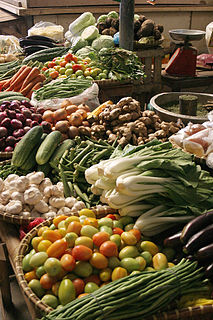 W
WAlkaline diet describes a group of loosely related diets based on the misconception that different types of food can have an effect on the pH balance of the body. It originated from the acid ash hypothesis, which primarily related to osteoporosis research. Proponents of the diet believe that certain foods can affect the acidity (pH) of the body and that the change in pH can therefore be used to treat or prevent disease. Credible laboratories have done extensive research on this subject and have proven the theory to be false, not supporting the claimed mechanism of this diet. Due to conclusive evidence, it is not recommended by dietitians or other health professionals.
 W
WThe Atkins diet is a low-carbohydrate fad diet devised by Robert Atkins in the 1970s, marketed with claims that carbohydrate restriction is crucial to weight loss and that the diet offered "a high calorie way to stay thin forever".
 W
WThe BRAT diet is a restrictive diet that was once recommended for people, particularly children, with gastrointestinal distress like vomiting, diarrhea, or gastroenteritis. Evidence, however, does not support a benefit. It is no longer generally recommended as it is unnecessarily restrictive. The diet was first discussed in 1926.
 W
WSoul food is a kind of African American cuisine that encompasses a variety of fried, roasted, and boiled food dishes consisting of chicken and pork meats, sweet potatoes, corn, leafy greens and other vegetables. Soul food has long been embedded in African American culture, but pushes towards healthy eating habits, for both physical and mental health, have adapted soul food cuisine to fit within health trends. This article will describe modifications of traditional soul food within health trends, including soul food with low carb, soul food with low sugar, soul food with low fat, soul food for vegan and soul food in gluten-free.
 W
WChristian diet programs are books and other name-brand products promoting weight-loss diets and other diets that the authors believe are consistent with Christian rules and values. They may borrow elements from Jewish dietary laws, the Bible, modern nutrition science, or other sources. Christian diet and exercise programs became popular in the 1970s. They differ from historical, non-commercial Christian dietary traditions, such as not eating meat on Fridays.
 W
WThe cotton ball diet is a fad diet that involves consuming cotton balls dipped in liquids such as juices or smoothies. The cotton is intended to make a person's stomach feel full without them gaining weight. The diet has been repeatedly condemned as dangerous. It is thought to originate from the modeling industry in which women are encouraged to be unhealthily thin.
 W
WFood consumption is the amount of food available for human consumption as estimated by the United Nations Food and Agriculture Organization (FAO) Food Balance Sheets. However, the actual food consumption may be lower than the quantity shown as food availability depends on the magnitude of wastage and losses of food in the household, for example during storage, in preparation and cooking, as plate-waste or quantities fed to domestic animals and pets, thrown or given away.
 W
WThe Daniel Fast is a partial fast that is popular among Evangelical Protestants in North America, in which meat, wine, and other rich foods are avoided in favor of vegetables and water for typically three weeks in order to be more sensitive to God. The fast is based on the lifelong kosher diet of the Jewish hero Daniel in the biblical Book of Daniel and the three-week mourning fast in which Daniel abstained from all meat and wine. A similar observance can be seen with the 40-day season of Lent that is observed by Orthodox, Catholic, and some Mainline Protestant Christians, though the Daniel Fast can be as short as 10 days. The passage in Chapter 1 refers to a 10-day test wherein Daniel and others with him were permitted to eat vegetables and water to avoid the Babylonian king's food and wine. After remaining healthy at the end of the 10-day period, they continued the vegetable diet for the three years of their education. The passage in Chapter 10 refers to a three-week fast of no meat, wine, or rich food.
 W
WDiet plays an important role in the genesis of obesity. Personal choices, food advertising, social customs and cultural influences, as well as food availability and pricing all play a role in determining what and how much an individual eats.
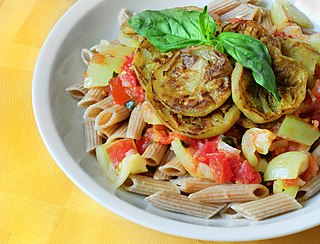 W
WDiet food refers to any food or beverage whose recipe is altered to reduce fat, carbohydrates, and/or sugar in order to make it part of a weight loss program or diet. Such foods are usually intended to assist in weight loss or a change in body type, although bodybuilding supplements are designed to increase weight
 W
WThe dietary energy supply is the food available for human consumption, usually expressed in kilocalories or kilojoules per person per day. It gives an overestimate of the total amount of food consumed as it reflects both food consumed and food wasted. It varies markedly between different regions and countries of the world. It has also changed significantly over the 21st century. Dietary energy supply is correlated with the rate of obesity.
 W
WThe Eatwell Plate is a pictorial summary of the main food groups and their recommended proportions for a healthy diet. It is the method for illustrating dietary advice by the Department of Health, issued officially by the government of the United Kingdom.
 W
WEntomophagy describes a feeding behaviour that includes insects. Aside from non-human creatures, the term can also refer to the practice of eating insects among humans.
 W
WA fad diet is a diet that becomes popular for a short time, similar to fads in fashion, without being a standard dietary recommendation, and often making unreasonable claims for fast weight loss or health improvements. There is no single definition of what is a fad diet. The term fad diet encompasses a variety of diets with different approaches and evidence bases, and thus different outcomes, advantages, and disadvantages.
 W
WValter D. Longo is an Italian-American biogerontologist and cell biologist known for his studies on the role of fasting and nutrient response genes on cellular protection aging and diseases and for proposing that longevity is regulated by similar genes and mechanisms in many eukaryotes. He is currently a professor at the USC Davis School of Gerontology with a joint appointment in the department of Biological Sciences as well as serving as the director of the USC Longevity Institute.
 W
WFooya is a clinically proven health education curriculum delivered via a gamified mobile app which uses implicit learning through neurocognitive computing, to induce medically significant disease prevention outcomes.
 W
WFreeganism is an ideology of limited participation in the conventional economy and minimal consumption of resources, particularly through recovering wasted goods like food. The word "freegan" is a portmanteau of "free" and "vegan". While vegans avoid buying animal products as an act of protest against animal exploitation, freegans—at least in theory—avoid buying anything as an act of protest against the food system in general.
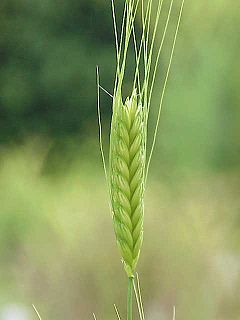 W
WA gluten-free diet (GFD) is a nutritional plan that strictly excludes gluten, which is a mixture of proteins found in wheat, as well as barley, rye, and oats. The inclusion of oats in a gluten-free diet remains controversial, and may depend on the oat cultivar and the frequent cross-contamination with other gluten-containing cereals.
 W
WThe Grapefruit diet is a short-term fad diet that has existed in the United States since at least the 1930s. There are variations on the diet, although it generally consists of eating one grapefruit at each meal, along with meat, eggs, other foods that are rich in fat and protein, and certain vegetables. Sugar, fruits, sweet vegetables, grains and starchy vegetables are to be avoided. The grapefruit diet is thus a low-carbohydrate diet. A typical breakfast menu usually includes bacon and eggs. The diet is based on the claim that grapefruit has a fat-burning enzyme or similar property. The grapefruit diet does not require exercise. The grapefruit diet lasts for 10 to 12 days followed by 2 days off.
 W
WHMR, formerly known as Health Management Resources, is a part of Merck & Co. that offers weight management programs that combine a structured diet, physical activity, and lifestyle-change coaching.
 W
WA healthy diet is a diet that helps maintain or improve overall health. A healthy diet provides the body with essential nutrition: fluid, macronutrients, micronutrients, and adequate food energy.
 W
WA high-protein diet is a diet in which 20% or more of the total daily calories comes from protein. Most high protein diets are high in saturated fat and severely restrict intake of carbohydrates.
 W
WIntermittent fasting, also known as intermittent energy restriction, is an umbrella term for various meal timing schedules that cycle between voluntary fasting and non-fasting over a given period. Methods of intermittent fasting include alternate-day fasting, periodic fasting, and daily time-restricted feeding. A type of periodic fasting known as the 5:2 diet was popularised in the UK and Australia by Michael Mosley around 2012.
 W
WTraditionally Inuit cuisine, which is taken here to include Greenlandic cuisine, Yup'ik cuisine and Aleut cuisine, consisted of a diet of animal source foods that were fished, hunted, and gathered locally. In the 20th century the Inuit diet began to change and by the 21st century the diet was closer to a Western diet. After hunting, they often honour the animals spirit by singing songs and performing rituals. Although traditional or country foods still play an important role in the identity of Inuit, a large amount of food is purchased from the store, which has led to health problems and food insecurity.
 W
WIslamic dietary laws are dietary laws that Muslims follow. Islamic jurisprudence specifies which foods are halāl and which are harām. The dietary laws are found in the Quran, the holy book of Islam, as well as in collections of traditions attributed to Islamic prophet Muhammad.
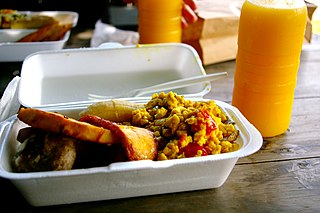 W
WItal, also spelled I-tal, is food often celebrated by those in the Rastafari movement. It is compulsory in the Bobo Ashanti and Nyabinghi mansions, though not in the Twelve Tribes of Israel. The word derives from the English word "vital", with the initial "v" removed. This emphasis on the letter "I" is done to many words in the Rastafari vocabulary to signify the unity of the speaker with all of nature. The expression of Ital eating varies widely from Rasta to Rasta, and there are few universal rules of Ital living.
 W
WThe ketogenic diet is a high-fat, adequate-protein, low-carbohydrate diet that in medicine is used mainly to treat hard-to-control (refractory) epilepsy in children. The diet forces the body to burn fats rather than carbohydrates.
 W
WA lacto-vegetarian diet is a diet that abstains from the consumption of meat as well as eggs, while still consuming dairy products such as milk, cheese, yogurt, butter, ghee, cream, and kefir.
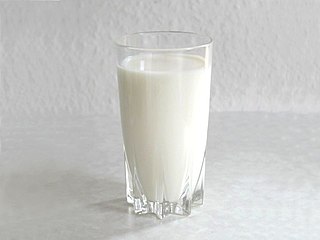 W
WA liquid diet is a diet that mostly consists of liquids, or soft foods that melt at room temperature. A liquid diet usually helps provide sufficient hydration, helps maintain electrolyte balance, and is often prescribed for people when solid food diets are not recommended, such as for people who suffer with gastrointestinal illness or damage, or before or after certain types of medical tests or surgeries involving the mouth or the digestive tract.
 W
WLow-carbohydrate diets restrict carbohydrate consumption relative to the average diet. Foods high in carbohydrates are limited, and replaced with foods containing a higher percentage of fat and protein, as well as low carbohydrate foods.
 W
WA low-fat diet is one that restricts fat, and often saturated fat and cholesterol as well. Low-fat diets are intended to reduce the occurrence of conditions such as heart disease and obesity. For weight loss, they perform similarly to a low-carbohydrate diet, since macronutrient composition does not determine weight loss success. Fat provides nine calories per gram while carbohydrates and protein each provide four calories per gram. The Institute of Medicine recommends limiting fat intake to 35% of total calories to control saturated fat intake.
 W
WA low-sulfur diet is a diet with reduced sulfur content. Important dietary sources of sulfur and sulfur containing compounds may be classified as essential mineral, essential amino acid (methionine) and semi-essential amino acid.
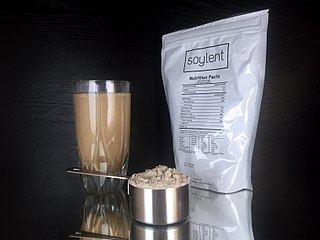 W
WA meal replacement is a drink, bar, soup, etc. intended as a substitute for a solid food meal, usually with controlled quantities of calories and nutrients. Some drinks are in the form of a health shake. Medically prescribed meal replacement drinks include the required vitamins and minerals. Bodybuilders sometimes use meal replacements, not formulated for weight loss, to save food preparation time when they are eating 5 to 6 meals a day.
 W
WThe Okinawa diet describes the eating habits of the indigenous people of the Ryukyu Islands, which is believed to contribute to their exceptional longevity. It is also the name of a weight-loss diet based on this.
 W
WOrganic food is food produced by methods complying with the standards of organic farming. Standards vary worldwide, but organic farming features practices that cycle resources, promote ecological balance, and conserve biodiversity. Organizations regulating organic products may restrict the use of certain pesticides and fertilizers in the farming methods used to produce such products. Organic foods typically are not processed using irradiation, industrial solvents, or synthetic food additives.
 W
WPescetarianism is the practice of eating vegetarian but still including seafood in their diet. Around 3% of humans are pescetarian.
 W
WThe planetary health diet is a flexitarian diet created by the EAT-Lancet commission as part of a report released in The Lancet on 16 January 2019. The aim of the report and the diet it developed is to create dietary paradigms that have the following aims:To feed a world's population of 10 billion people in 2050 To greatly reduce the worldwide number of deaths caused by poor diet To be environmentally sustainable as to prevent the collapse of the natural world
 W
WA plant-based diet or a plant-rich diet is a diet consisting mostly or entirely of plant-based foods. Plant-based foods are foods derived from plants with no animal-source foods or artificial ingredients. While a plant-based diet avoids or has limited animal products, it is not necessarily vegan. The Academy of Nutrition and Dietetics states that well-planned plant-based diets support health and are appropriate throughout all life stages, including pregnancy, lactation, childhood, and adulthood, as well as for athletes.
 W
WPollotarianism is the practice of adhering to a diet that incorporates poultry as the only source of meat in an otherwise vegetarian diet.
 W
WProzis is an internet-based Portuguese brand that pertains to the Prozis.group and is active in the sports nutrition sector. The company is based in Esposende and is one of the biggest sports nutrition store in Europe, with over 800,000 registered and active customers across more than 100 markets. In 2015, it employed over 230 people and had a revenue of more than 45 million euros. Prozis was founded in 2007 by Miguel Milhão. Besides selling sports supplements online, it also produces them on a large scale at its production facility in Póvoa de Lanhoso, in which an amount of 5 million euros was invested.
 W
WPure, White and Deadly is a 1972 book by John Yudkin, a British nutritionist and former Chair of Nutrition at Queen Elizabeth College, London. Published in New York, it was the first publication by a scientist to anticipate the adverse health effects, especially in relation to obesity and heart disease, of the public's increased sugar consumption. At the time of publication, Yudkin sat on the advisory panel of the British Department of Health's Committee on the Medical Aspects of Food and Nutrition Policy (COMA). He stated his intention in writing the book in the last paragraph of the first chapter: "I hope that when you have read this book I shall have convinced you that sugar is really dangerous."
 W
WRaw foodism, also known as rawism or following a raw food diet, is the dietary practice of eating only or mostly food that is uncooked and unprocessed. Depending on the philosophy, or type of lifestyle and results desired, raw food diets may include a selection of fruits, vegetables, nuts, seeds, eggs, fish, meat, and dairy products. The diet may also include simply processed foods, such as various types of sprouted seeds, cheese, and fermented foods such as yogurts, kefir, kombucha, or sauerkraut, but generally not foods that have been pasteurized, homogenized, or produced with the use of synthetic pesticides, fertilizers, solvents, and food additives.
 W
WRaw foodism, also known as rawism or following a raw food diet, is the dietary practice of eating only or mostly food that is uncooked and unprocessed. Depending on the philosophy, or type of lifestyle and results desired, raw food diets may include a selection of fruits, vegetables, nuts, seeds, eggs, fish, meat, and dairy products. The diet may also include simply processed foods, such as various types of sprouted seeds, cheese, and fermented foods such as yogurts, kefir, kombucha, or sauerkraut, but generally not foods that have been pasteurized, homogenized, or produced with the use of synthetic pesticides, fertilizers, solvents, and food additives.
 W
WA semi-vegetarian diet (SVD), also called a flexitarian, is one that is centered on plant foods with the occasional inclusion of meat. Flexitarian is a portmanteau of the words flexible and vegetarian, signifying its followers' less strict diet pattern when compared to (other) vegetarian pattern diets.
 W
WThe Swank Diet is a diet that is low in saturated fat, which was proposed in 1949 by Roy Laver Swank, MD, PhD (1909–2008), academic neurologist at the University of Oregon, for the treatment of multiple sclerosis.
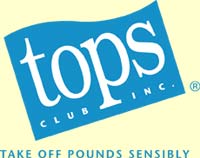 W
WTOPS Club, Inc. is a non-profit charitable corporation based in Milwaukee, Wisconsin, United States, having members in chapters located worldwide, the majority of them in the United States and Canada. Its twofold objective is to sponsor research and foster support groups in human body weight control. Most members refer to the organization simply as "TOPS", an acronym for "Take Off Pounds Sensibly."
 W
WVegetarianism is the practice of abstaining from the consumption of meat, and may also include abstention from by-products of animal slaughter.
 W
WA very-low-calorie diet (VLCD), also known as semistarvation diet and crash diet, is a type of diet with very or extremely low daily food energy consumption. Often described as a fad diet, it is defined as a diet of 800 kilocalories (3,300 kJ) per day or less. Modern medically supervised VLCDs use total meal replacements, with regulated formulations in Europe and Canada which contain the recommended daily requirements for vitamins, minerals, trace elements, fatty acids, protein and electrolyte balance. Carbohydrates may be entirely absent, or substituted for a portion of the protein; this choice has important metabolic effects. Medically supervised VLCDs have specific therapeutic applications for rapid weight loss, such as in morbid obesity or before a bariatric surgery, using formulated, nutritionally complete liquid meals containing 800 kilocalories or less per day for a maximum of 12 weeks.
 W
WThe Western pattern diet (WPD) is a modern dietary pattern that is generally characterized by high intakes of red meat, processed meat, pre-packaged foods, butter, candy and sweets, fried foods, conventionally-raised animal products, high-fat dairy products, eggs, refined grains, potatoes, corn and high-sugar drinks, and low intakes of fruits, vegetables, whole grains, pasture-raised animal products, fish, nuts, and seeds. The modern standard American diet was brought about by fundamental lifestyle changes following the Neolithic Revolution, and, later, the Industrial Revolution.
 W
WA plant-based diet or a plant-rich diet is a diet consisting mostly or entirely of plant-based foods. Plant-based foods are foods derived from plants with no animal-source foods or artificial ingredients. While a plant-based diet avoids or has limited animal products, it is not necessarily vegan. The Academy of Nutrition and Dietetics states that well-planned plant-based diets support health and are appropriate throughout all life stages, including pregnancy, lactation, childhood, and adulthood, as well as for athletes.
 W
WYup'ik cuisine refers to the Eskimo style traditional subsistence food and cuisine of the Yup'ik people from the western and southwestern Alaska. Also known as Cup'ik cuisine for the Chevak Cup'ik dialect speaking Eskimos of Chevak and Cup'ig cuisine for the Nunivak Cup'ig dialect speaking Eskimos of Nunivak Island. This cuisine is traditionally based on meat from fish, birds, sea and land mammals, and normally contains high levels of protein. Subsistence foods are generally considered by many to be nutritionally superior superfoods. Yup’ik diet is different from Alaskan Inupiat, Canadian Inuit, and Greenlandic diets. Fish as food are primary food for Yup'ik Eskimos. Both food and fish called neqa in Yup'ik. Food preparation techniques are fermentation and cooking, also uncooked raw. Cooking methods are baking, roasting, barbecuing, frying, smoking, boiling, and steaming. Food preservation methods are mostly drying and less often frozen. Dried fish is usually eaten with seal oil. The ulu or fan-shaped knife used for cutting up fish, meat, food, and such.